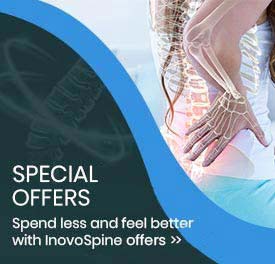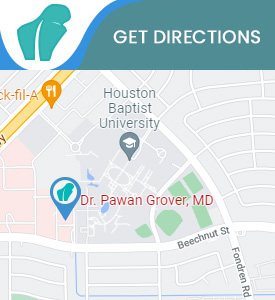Living with Sciatica: Tips for Navigating Daily Life with Sciatic Nerve Pain
Living with sciatica can be a daily challenge, but with the right guidance, you can effectively manage your pain. At InovoSpine, Dr. Pawan Grover, MDPA, provides tips and personalized strategies for navigating daily life with sciatic nerve pain. For more information, contact us or book an online appointment. We are conveniently located at 1140 Business Center Dr, Suite 110, Houston TX 77043.
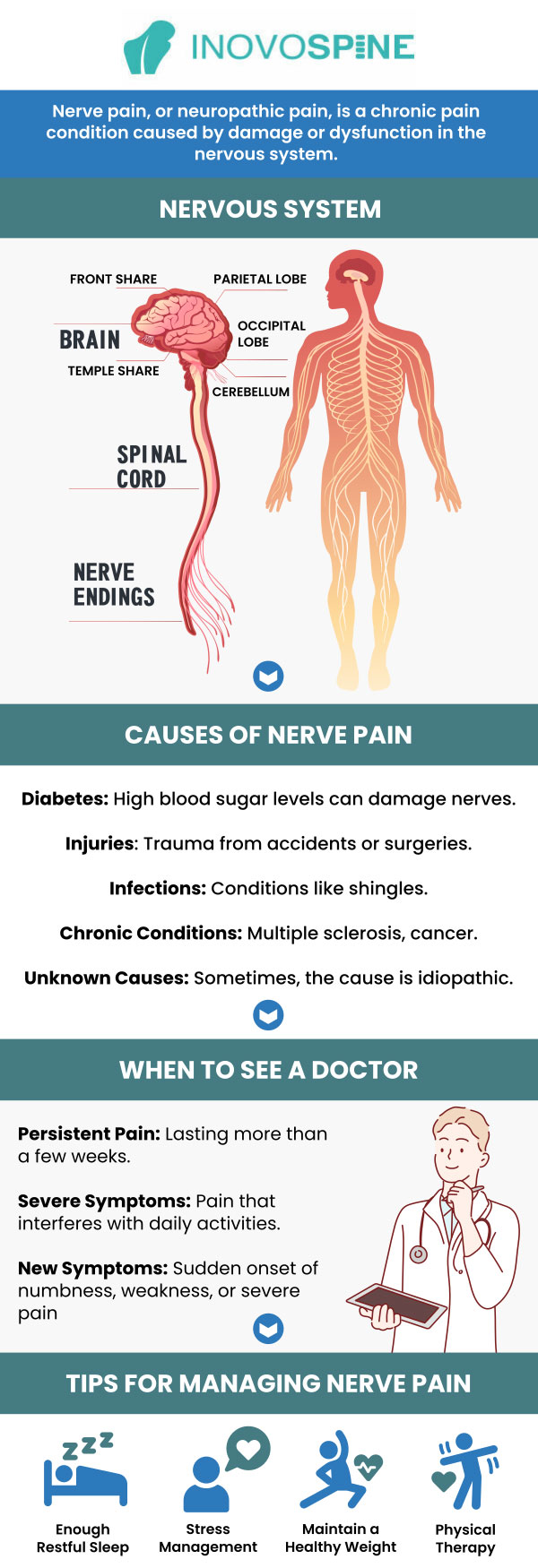
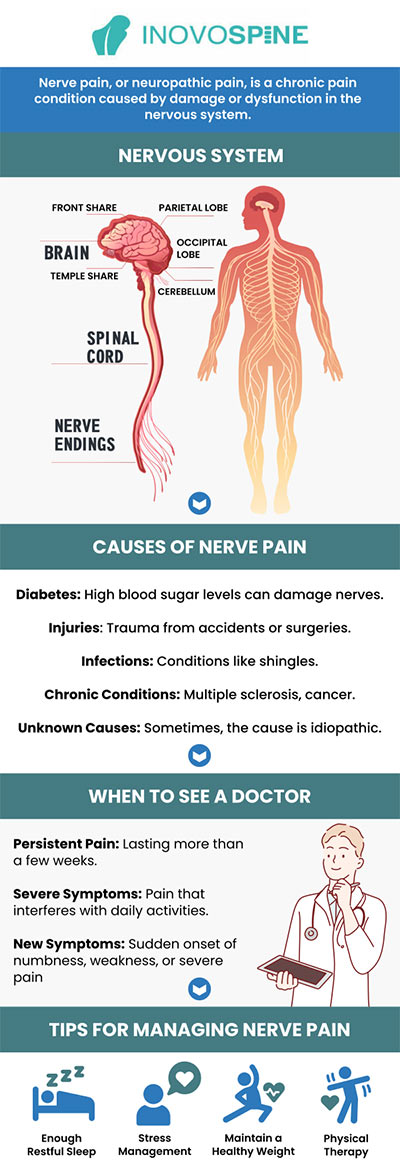
Table of Contents:
How can I safely and comfortably bend, lift, and twist without aggravating my sciatica?
What shoes should I wear to support my back and minimize pressure on my sciatic nerve?
What is the best way to sit at a desk or computer for extended periods without triggering sciatica?
What are the best sleeping positions for people with sciatic nerve pain?
We understand that managing sciatica involves more than just medical treatment—it’s also about making practical, everyday adjustments to protect your spine and reduce discomfort. Our team encourages all patients to be mindful of their movements, especially when bending, lifting, or twisting, as these actions can significantly impact sciatic nerve health.
● Bending: When you need to bend, hinge at your hips instead of curving your lower back. Keep your back straight and bend your knees, lowering yourself with your legs rather than reaching down with your spine. This technique, recommended by our Inovo Spine specialists, helps minimize pressure on the sciatic nerve.
● Lifting: Before lifting any object, gauge its weight and avoid anything that feels too heavy. Stand close to the item, squat by bending your knees and hips, and keep your back straight. Lift using the strength of your legs, not your back, and hold the object close to your body. Our InovoSpine team cautions against sudden or jerky movements, as these can aggravate sciatica symptoms.
● Twisting: Twisting motions can be especially problematic for those with sciatica. Rather than twisting at the waist, pivot your entire body using your feet. If you need to move an object to the side, step in that direction instead of reaching and twisting. This approach reduces strain on your lower back and helps prevent irritation of the sciatic nerve—a principle we emphasize at InovoSpine.
At InovoSpine, we understand that every detail of your lifestyle can influence your spinal health—including your choice of footwear. Proper shoes play a significant role in supporting your back and minimizing pressure on the sciatic nerve, especially for individuals experiencing back pain or sciatica.
When selecting footwear, we recommend prioritizing shoes with excellent arch support. This helps maintain the proper alignment of your feet, legs, and spine, reducing unnecessary pressure on your lower back. Good cushioning in the heel and forefoot areas can also absorb shock and lessen impact with every step, which is particularly important for our patients managing back pain.
Shoes with firm, supportive soles are preferable to those that are too soft or flimsy. Stable footwear helps prevent your feet from rolling inward or outward, which could otherwise aggravate back or sciatic pain. Additionally, well-fitting shoes—neither too tight nor too loose—ensure that your weight is distributed evenly, reducing strain on your spine.
At InovoSpine, we advise avoiding high heels, as they can tilt your pelvis forward and increase pressure on your lower back and sciatic nerve. Likewise, completely flat shoes or flip-flops tend to lack the support necessary for optimal spinal health. Instead, orthopedic or athletic shoes with built-in arch support and cushioning are often effective options. For some patients, custom or over-the-counter orthotic inserts can provide added support and comfort.
We often see patients struggling with sciatica—pain that radiates from the lower back down the leg along the sciatic nerve. One common trigger for sciatica is prolonged sitting at a desk or computer, a routine many of our patients can’t avoid. Fortunately, making a few ergonomic changes can significantly reduce your risk of sciatica flare-ups and support your spinal health.
Choose a chair that supports the natural curve of your lower back. If your chair lacks lumbar support, use a small cushion or rolled-up towel to provide extra comfort. Ensure your feet rest flat on the floor, with your knees level with or slightly below your hips. Avoid crossing your legs, as this can restrict circulation and increase strain on your lower back and pelvis.
When setting up your desk, position your monitor at eye level to prevent straining your neck. Keep your shoulders relaxed, elbows close to your body, and wrists straight while typing. These adjustments help maintain the alignment of your spine and reduce tension in the lower back.
No matter how ergonomic your setup, it’s vital to take short breaks. At InovoSpine, we recommend standing, stretching, and walking around for a few minutes every 30 to 60 minutes. Gentle stretches for your hamstrings, hips, and lower back can help relieve pressure on the sciatic nerve and improve circulation.
We understand that sciatic nerve pain can make it difficult to get a restful night’s sleep. Our specialists often recommend making simple but effective adjustments to your sleeping position, which can significantly help relieve discomfort and promote spine health.
For many of our patients, the most supportive sleeping position is lying on their back with a pillow placed under their knees. This position helps maintain the spine’s natural alignment, reducing pressure on the lower back and the sciatic nerve. If sleeping on your back isn’t comfortable for you, try lying on your side with a pillow between your knees. This helps prevent the upper leg from pulling the spine out of alignment, supporting the natural curve of your back.
We generally advise against sleeping on your stomach, as this can increase strain on your lower back and may worsen sciatic symptoms. Choosing a mattress that provides proper support, along with supportive pillows, is also important for maintaining spinal alignment and comfort.
In addition to adjusting your sleep position, gentle stretching before bed and practicing good sleep hygiene may further enhance your sleep quality and help manage pain. If your sciatic pain continues or worsens, the team at InovoSpine is here to help. Our experienced physicians can provide a personalized assessment and develop a treatment plan tailored to your specific needs. For more information, contact us or schedule an online appointment. We serve patients from Houston TX, Hedwig Village TX, Meadows Place TX, Missouri City TX, Hunters Creek Village TX, Spring Valley Village TX, and surrounding areas.
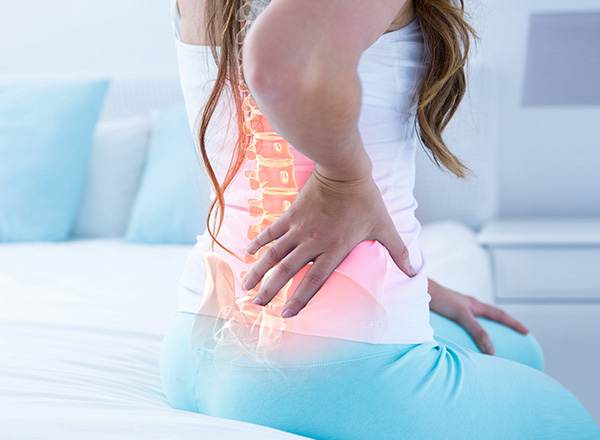
Additional Service You May Need
- Regenerative Medicine
- Spinal Arthritis
- Diagnostic Mapping
- Interventional Pain
- Minimally Invasive
- Spine Pain
- Radiofrequency Ablation
- Spinal Cord Stimulation
- Physical Rehabilitation
- Facet Joint Pain
- Herniated Discs
- Muscle and Joint Pain
- Post-Laminectomy Pain
- Myofascial Pain
- Peripheral Nerve Pain
- Regional Pain Syndrome

